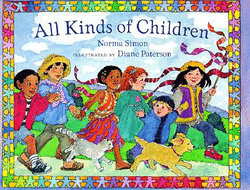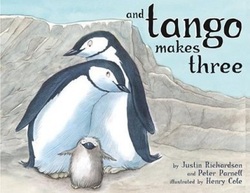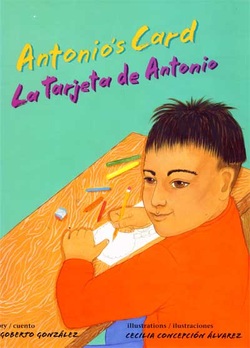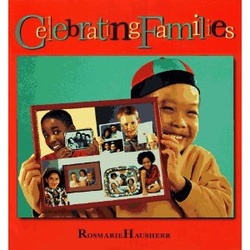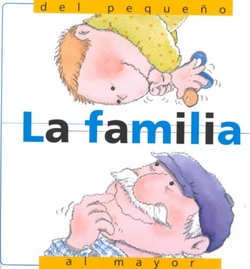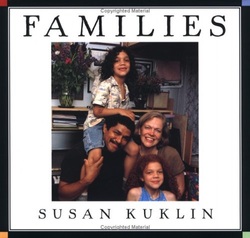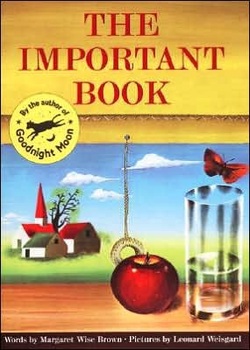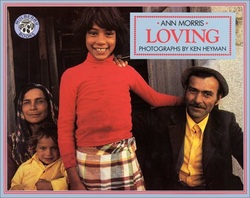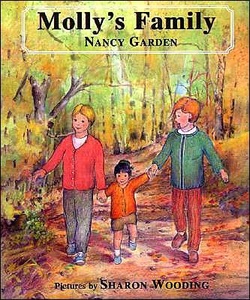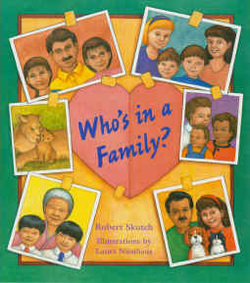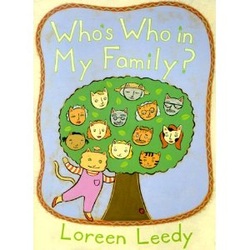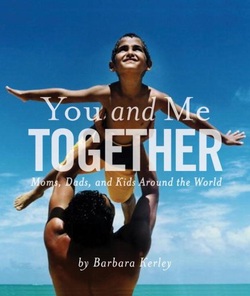Faces of a Family
Children's Literature Connections
All Kinds of Children by Norma Simon
There are all kinds of children around the world and all of these children have similarities and differences. All over the world, children live in homes. Although they live in homes, all of the homes do not look the same. It is important to see both what is the same and different among people.
Unit Connections: This is a great partner to the lesson on how families are alike and different. It extends the idea to children themselves and connects their ideas of family and living to ideas from around the world.
Unit Connections: This is a great partner to the lesson on how families are alike and different. It extends the idea to children themselves and connects their ideas of family and living to ideas from around the world.
And Tango Makes Three by Justin Richardson and Peter Parnell
When all the other boy penguins were finding girl penguins, Roy and Silo, two boy penguins, found each other. They hoped to be able to have a baby but could not lay an egg. Mr. Gramzay, the zookeeper, decided to give Roy and Silo their wish when an egg was abandoned and Tango was born!
Unit connections: This book can both be used during who's in a family and how families are different and similar in the class library.
Unit connections: This book can both be used during who's in a family and how families are different and similar in the class library.
Antonio's Card/La Tarjeta de Antonio by Rigoberto Gonzalez
Antonio's mami does not look like other moms in the school. She wears overall bibs and her hair is cut chort. When mami comes to pick Antonio up from school, other kids make fun of how she looks. When it is time for Mother's Day, Antonio does not know if he wants to acknowledge his mami. After confessing how he feels to his family, Antonio decides to introduce his entire class to his mami and be proud of the family he has.
Unit Connections: When talking about similarities and differences, I want students to know that they should be proud of the uniqueness of their families. To work toward this goal, students could make a card for an adult in their family thanking them for something or telling them that they are thankful that their family is special.
Unit Connections: When talking about similarities and differences, I want students to know that they should be proud of the uniqueness of their families. To work toward this goal, students could make a card for an adult in their family thanking them for something or telling them that they are thankful that their family is special.
Celebrating Families by Rosmarie Hausherr
Families are never the same and we should celebrate these differences! On each spread of pages, a new child is introduced holding a picture of their family. They then talk a little bit about what life is like with their family and what makes their family unique.
Unit Connections: First, this book fits great with the lesson on how families are alike and different. It provides great examples of unique aspects of different families. It also talks a lot about the different people that are possibly part of a family. As an extension on this idea of who is in a family, students could make a family tree and show who is in their family.
Unit Connections: First, this book fits great with the lesson on how families are alike and different. It provides great examples of unique aspects of different families. It also talks a lot about the different people that are possibly part of a family. As an extension on this idea of who is in a family, students could make a family tree and show who is in their family.
La familia by Nuria Roca
This book is composed of short profiles of different families and is written completely in Spanish. Marta is an only child, Juan lives with his dad and sister, and Pablo is adopted. Other than the traditional idea of a family, students are introduced to the classroom as a family and the world as a family.
Unit Connections: This book can be integrated into any lesson during the unit, as it covers a wide variety of topics. The important part about this book is that it is completely in Spanish. I would keep this in my classroom library and refer to it during lessons so that my Spanish-speaking students knew that they had this resource to refer to throughout the lesson.
Unit Connections: This book can be integrated into any lesson during the unit, as it covers a wide variety of topics. The important part about this book is that it is completely in Spanish. I would keep this in my classroom library and refer to it during lessons so that my Spanish-speaking students knew that they had this resource to refer to throughout the lesson.
Families by Susan Kuklin
The word family means different things to different people. To Ben, it means his grandmother and grandfather from Greece. To Kira and Matias it means parents who come from different cultures and have blended them to make a family. To Maisie it means living with her mom three and a half days and living with her dad and cat three and a half days each week. Differences and similarities between families give us so much to think about!
Unit Connections: This book could be used instead of the "That's a Family" video segments to talk about similarities and differences between families if the technology is not available.
Unit Connections: This book could be used instead of the "That's a Family" video segments to talk about similarities and differences between families if the technology is not available.
The Important Book by Margaret Wise Brown
Everything in this world has an important purpose. The important thing about a spoon is that you eat with it. The important thing about snow is that it is white. The important thing about the sky is that it is always there. The important thing about you is that you are you!
Unit connections: Along with learning about why families are important during the fourth lesson, it is essential for students to learn why they are important as well. This book takes simple objects and mikes their simplicity what is important about them. Students may not think that they are important at first, but after reading this book will hopefully see that they all have something wonderful to offer the classroom and their families. Students could write and draw a picture showing why they are important. This could be done in a poem-type form, as in the book, or just as a few sentences.
Unit connections: Along with learning about why families are important during the fourth lesson, it is essential for students to learn why they are important as well. This book takes simple objects and mikes their simplicity what is important about them. Students may not think that they are important at first, but after reading this book will hopefully see that they all have something wonderful to offer the classroom and their families. Students could write and draw a picture showing why they are important. This could be done in a poem-type form, as in the book, or just as a few sentences.
Loving by Ann Morris
Families from around the world are profiled in this book. Moms, dads, and other adults in our lives care for us. They give us food, clothing, and a place to sleep. They teach us, take us places, and show us the world around us. Most importantly, the people in our families give us love.
Unit connections: In the lesson on why families are important, students listen to this book as a read-aloud and pause during the reading to discuss with partners and the whole groups about why families are important and what families give us.
Unit connections: In the lesson on why families are important, students listen to this book as a read-aloud and pause during the reading to discuss with partners and the whole groups about why families are important and what families give us.
Molly's Family by Nancy Garden
Molly's kindergarten class is drawing pictures of their families to hang up in the hallway for families to see when they come to visit. Molly starts working very hard on her picture. Her picture includes, the sun, the grass, her two moms, her puppy, and herself. When Tommy sees Molly's picture, he begins to laugh and says that no one has two moms. Molly is embarrassed and does not want anyone to see her picture. However, after talking with her mom and teacher, Molly knows it is okay to have two moms, to be different, and that she should be proud that she has two moms.
Unit Connections: When discussing who is in a family, this book can be used to discuss having parents of the same sex. Students can discuss why it is good to be different and why this is not a reason to be mean to someone.
Unit Connections: When discussing who is in a family, this book can be used to discuss having parents of the same sex. Students can discuss why it is good to be different and why this is not a reason to be mean to someone.
Who's in a Family? by Robert Skutch
Families can be made up in many different ways. Carl's has a mom and two younger sisters. Katie is an only child who enjoys camping with her family. Laura and Kyle live with their mom and her partner. Animals live in families too. For example, a mama chimp raises her babies by herself, with the help of older children. What is important to remember is that the people in your family are the people who love you the most.
Unit Connections: This book could be used during the lesson on who is in family as a read-aloud to students. The students can discuss different things that they do with families as well. Finally there is a page at the end of the book that could be photocopied for students to fill in with who is in their family.
Unit Connections: This book could be used during the lesson on who is in family as a read-aloud to students. The students can discuss different things that they do with families as well. Finally there is a page at the end of the book that could be photocopied for students to fill in with who is in their family.
Who's Who in My Family by Loreen Leedy
Ms. Fox's class is working on making family trees. Sandy has just finished her family tree and stands up in front of the class to show us who's who in her family. As she mentions each member on her family tree, she also adds in a special note about each person about what they like to do together, a certain hobby, or what has happened to them in the past. The day ends when Ms. Fox explains that we are all a whole family.
Unit Connections: During the lesson on who is in a family, this would be a great connection to bring in family trees. It is also a great place to talk about families of animals and how animals live together or alone.
Unit Connections: During the lesson on who is in a family, this would be a great connection to bring in family trees. It is also a great place to talk about families of animals and how animals live together or alone.
You and Me Together by Barbara Kerley
What do families do together? Moms, dads, and kids around the world share jokes, play a tune, take a nap, hold hands, tell a tale, and catch fish. Whatever it is that families are doing, they are doing it together. The pictures are vivid and include captions to tell the reader from where in the world they were taken.
Unit Connections: This book is the perfect accompaniment to the fifth lesson on families, which discusses what families do together. I used it as a read-aloud to show that families all around the world do similar things with their families, although they may be done in a different way. Students could also act out this book as an extension into drama to even better understand what families enjoy doing together.
Unit Connections: This book is the perfect accompaniment to the fifth lesson on families, which discusses what families do together. I used it as a read-aloud to show that families all around the world do similar things with their families, although they may be done in a different way. Students could also act out this book as an extension into drama to even better understand what families enjoy doing together.
